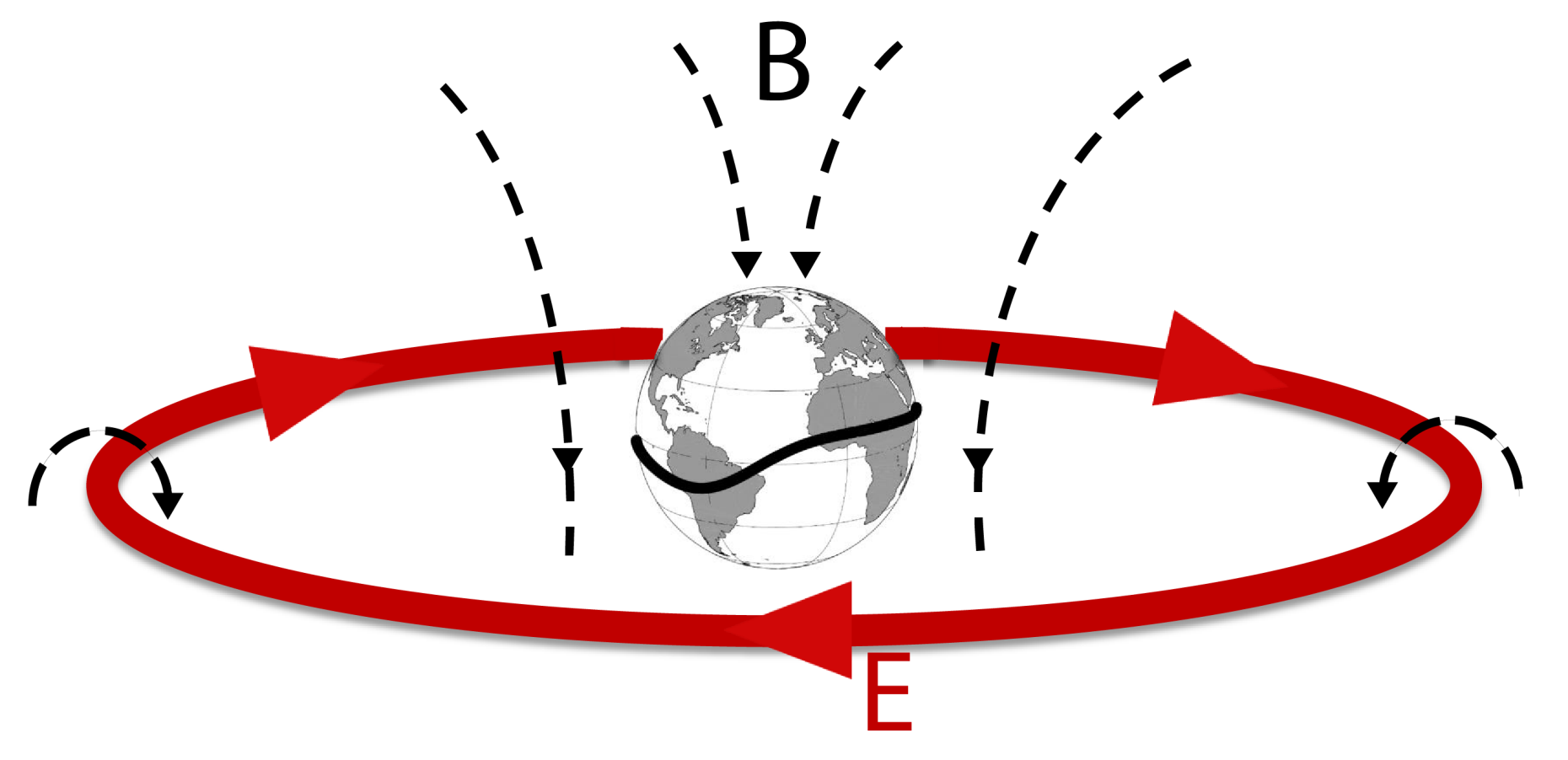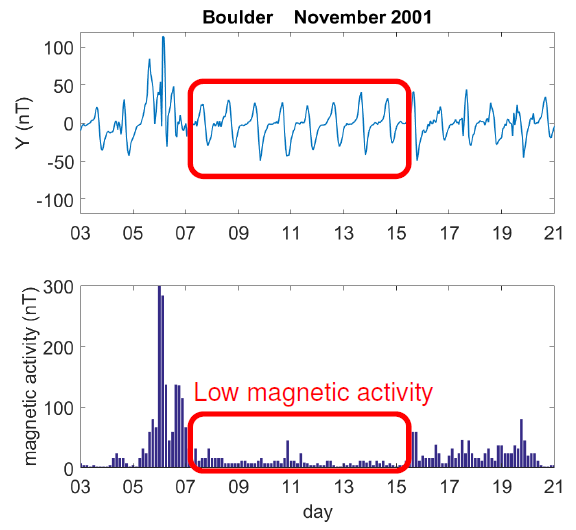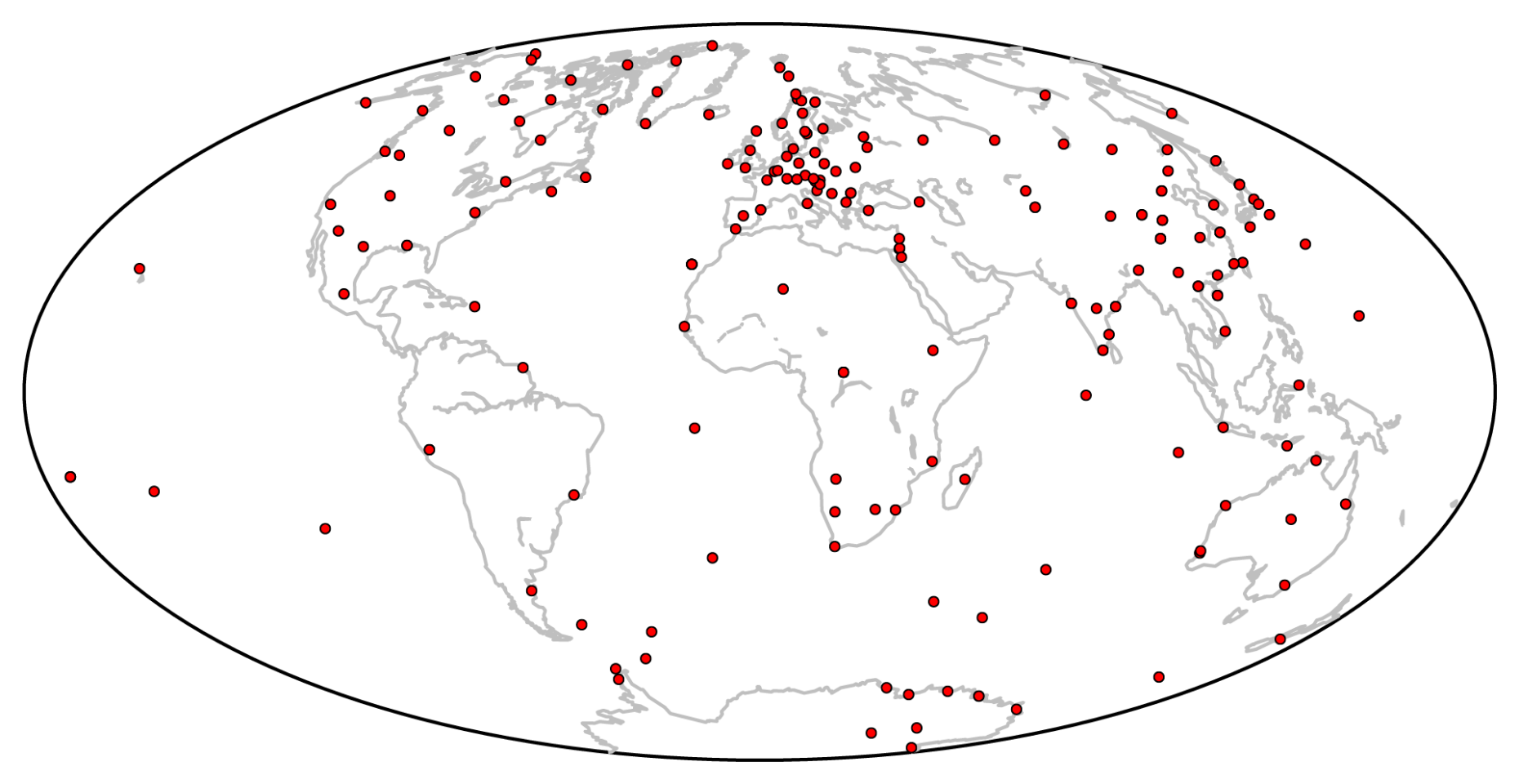Global Earth imaging
Many phenomena observed on the surface, such as volcanism, hot springs, earthquakes, have their origin deep in the Earth’s mantle. Therefore, to understand these processes, we need to understand the deep mantle, its physical state and dynamics.
To achieve this goal, we use natural EM variations coming from ionosphere, magnetosphere and ocean. These variations induce electrical currents in the Earth’s mantle, which are continuously measured at a set of ground geomagnetic observatoriesand satellites. We use data from the external pageCHAMPcall_made mission (2000-2010) and current constellation of three external pageSwarmcall_made satellites launched in 2013 by European Space Agency (ESA). Satellites provide high quality measurements uniformly covering the Earth and filling the gaps in between ground observations, thereby creating a possibility to extract tiny contributions, for instance due to external pageoceanic tidescall_made, which turn to be extremely useful in studying upper mantle conductivity.
Magnetosphere
Electromagnetic variations at periods longer than one day and up to periods of a few months have predominantly magnetospheric origin. These variations are mostly induced by the magnetospheric ring current. We use these signals to image conductivity at depths greater than 400 km.

Ionosphere
In period range between a few hours and one day, periodic signals from ionospheric current system, also known as solar quiet (Sq) variations, carry information on the upper mantle electrical conductivity.

On magnetically quiet days, Sq current system can be represented as two vortices moving along the magnetic dip equator. It is present on the sunlit part of the earth and driven by the solar heating radiation and thermosphere convection.

Oceanic tidal magnetic signals
When salty ocean water flows through the ambient magnetic field, an electric current is generated and this, in turn, induces magnetic field in the mantle. In particular, oceanic tides result in tiny (on the order of 2 nT, compared to the 40000 nT ambient field) magnetic signals that are yet measurable both on the ground and even at satellites. Such signals have been external pageextractedcall_made from CHAMP and Swarm data and we use them to image upper mantle conductivity below the oceans, where otherwise no observatories exist.


